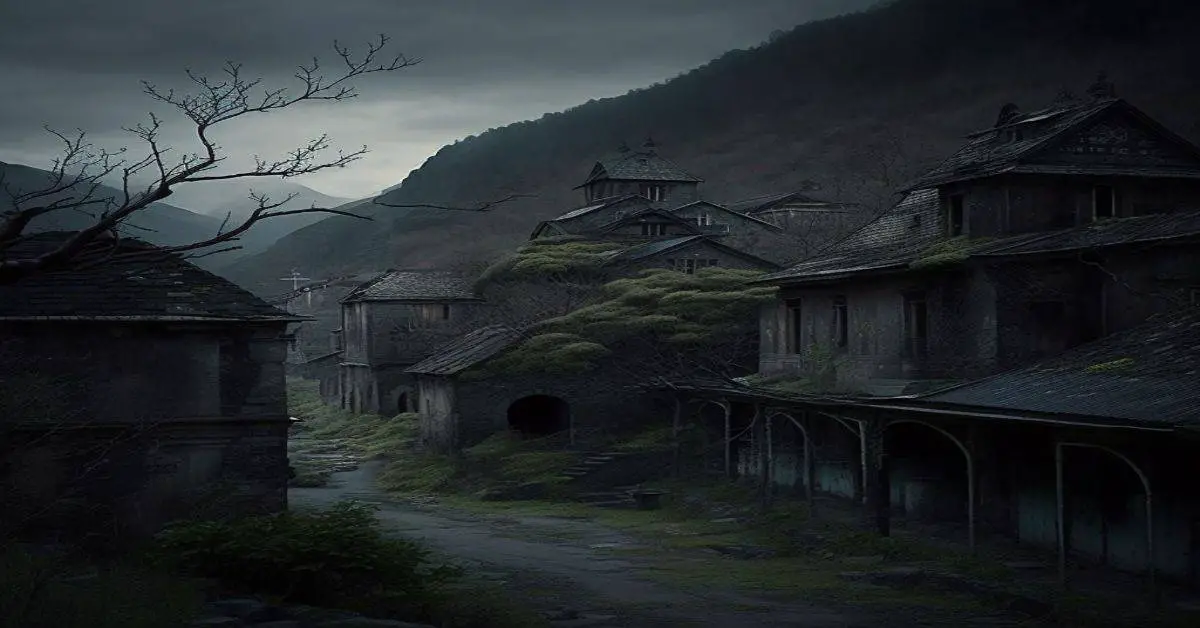Hermanas, New Mexico is a forgotten town with a rich history. Founded in 1879, the town’s population was small and primarily focused on farming and stock raising. Despite its modest size, Hermanas played an important role in the development of the region and its remnants remain a testament to the town’s past.
Today, the only remaining evidence of Hermanas’ existence is a section house from the El Paso Southwestern Railroad. This ghost town, named after the nearby Tres Hermanas Mountains, is located 32 miles south of Deming and offers a glimpse into the past of a once-thriving community.
In this article, we will explore the history and founding of Hermanas, the industries and economy that sustained it, and the remains and legacy that continue to intrigue visitors today.
Key Takeaways
- Hermanas, NM was founded in 1879 as a farming and stock raising community with a mix of Mexican and Anglo-American settlers and indigenous communities.
- The primary industries in Hermanas were farming and stock raising, with fertile land ideal for growing crops and raising livestock.
- The El Paso Southwestern Railroad line ran through Hermanas, providing a means to transport goods and people, with a significant impact on the town’s economy and industry.
- Despite its small size, Hermanas played a vital role in the development of the surrounding area, particularly in farming and stock raising, and its remnants remain an important destination for history enthusiasts.
History and Founding
The history and founding of Hermanas, a ghost town located on NM 9 and the El Paso Southwestern Railroad line, dates back to 1879 when it was established as a farming and stock raising community.
The town’s settlement patterns were typical for the region, with small homesteads scattered throughout the surrounding countryside.
The cultural influences in Hermanas were also representative of the area, with a mix of Mexican and Anglo-American settlers and indigenous communities who had lived there for centuries.
Despite its small size, Hermanas established a post office in 1903, which remained in operation until 1925.
The town’s main industry was agriculture, but it was also a railroad town on the El Paso Southwestern Railroad line.
The only remaining evidence of the town is what is left of the railroad section house, a reminder of the once-thriving community in this remote corner of New Mexico.
Industry and Economy
Farming and stock raising were the primary industries in this small New Mexican settlement. The fertile land surrounding Hermanas was ideal for growing crops and raising livestock, which provided the town with its economic backbone.
The founders of Hermanas likely saw the potential of the land and established the town to take advantage of the rich resources the area offered.
The railroad had a significant impact on the town’s economy and industry. The El Paso Southwestern Railroad line ran through Hermanas, providing the town with a means to transport goods and people.
This allowed the town’s agriculture and stock raising industries to expand beyond local markets, reaching a wider audience. Despite its small size, Hermanas was able to thrive thanks to the combination of its agricultural resources and access to transportation via the railroad.
Remains and Legacy
Despite its brief existence, the impact of Hermanas on the local economy and transportation industry is still felt today, as evidenced by the remaining ruins of the railroad section house that once served the town. The architecture ruins of the section house provide a glimpse into the past and serve as a reminder of the town’s cultural significance.
Although the town never exceeded a population of 150 people, it played a vital role in the development of the surrounding area, particularly in farming and stock raising. The railroad section house was an essential component of Hermanas’ infrastructure and was a hub for transporting goods and people.
Today, the ruins of the section house are a testament to the town’s legacy and cultural significance. The site remains an important destination for history enthusiasts, who come to explore the remains of the town and learn about its history. Despite its relatively short existence, the impact of Hermanas on the local region is still felt today, highlighting the importance of preserving and learning from our past.
Frequently Asked Questions
What caused the decline and eventual abandonment of Hermanas?
Hermanas, NM declined and eventually became abandoned due to a combination of drought impact and economic challenges its primarily agricultural and stock-raising industry faced. These factors likely resulted in a lack of resources and opportunities for the town’s small population.
Are there any local legends or ghost stories associated with the town?
Reports of local hauntings and supernatural encounters in Hermanas, NM have been limited. However, due to the town’s abandoned state, it is not uncommon for visitors to feel a sense of unease or mystery while exploring the remnants of the past.
Did Hermanas have any notable residents or visitors during its heyday?
Hermanas, NM, whose population never exceeded 150, had no notable residents or visitors during its heyday. The town’s historical significance lies in its role as a farming and stock raising center and as a railroad town on the El Paso Southwestern Railroad, while its cultural impact is negligible.
What was the daily life like for the average resident of Hermanas?
Residents of Hermanas likely followed a routine of farming and stock raising, with daily tasks including tending to crops and livestock. Social gatherings may have included attending church services or visiting the local saloon.
Are there any efforts to preserve or restore any of the remaining structures in Hermanas?
Preservation efforts for the remaining structures in Hermanas, NM are not currently underway. Despite its historical significance as a railroad town, the only evidence left is the railroad section house and the town’s post office, which closed in 1925.


